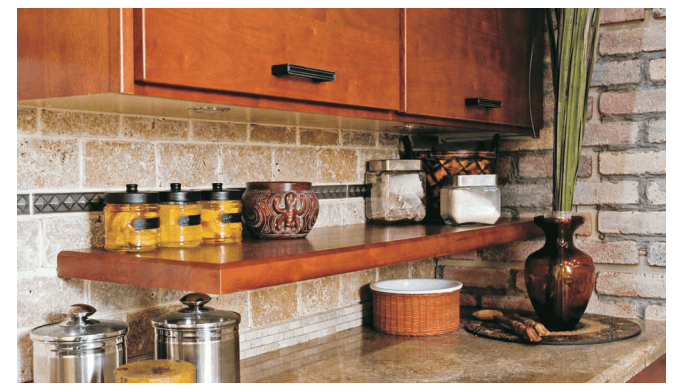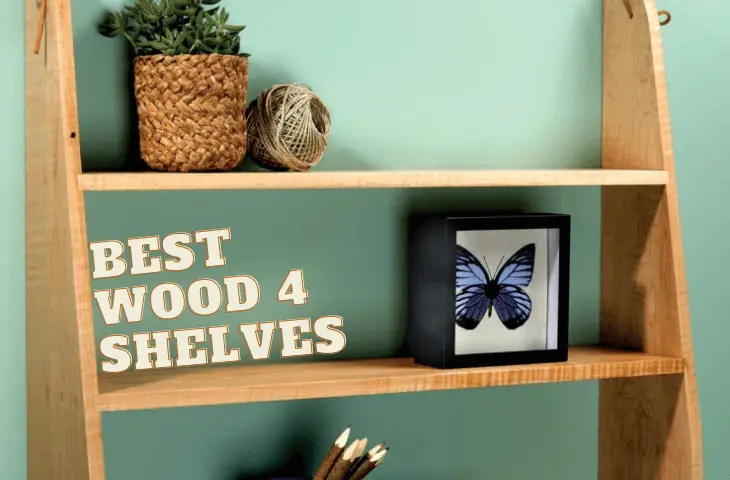Shelves are handy for displaying and storing various items in all living or working spaces. However, a lot of planning and consideration goes into making these pieces of furniture.
You need first to decide the shelf’s intended use and location before you can establish the best wood for your project. Stronger woods are best suited for heavy loading shelves, while light and colorful woods should be used for light decorative shelves. Other factors to consider include the wood’s workability, cost, and availability.
With that in mind, here are some of the best types of woods for shelves.
What is the best wood for shelves?

Solid Wood
Solid wood is a natural and durable choice that offers a wide range of species with unique characteristics. Here are some popular options for shelves:
- Oak: Renowned for its strength and versatility, oak is ideal for shelves that will hold heavy items. It comes in various finishes, allowing you to customize the look.
- Pine: Despite being a softer wood, pine remains a popular choice due to its affordability and ease of customization. It can be stained or painted to achieve different styles.
- Maple: With its dense and sturdy nature, maple strikes a balance between strength and aesthetics. You can enhance its appearance by staining it to match your preferences.
Plywood
Plywood is a composite wood product made of several layers of wood veneer. It offers strength and stability, making it suitable for shelves. Consider the following options:
- Birch Plywood: Birch plywood is known for its strength and stability. It features a smooth surface and attractive light color, often used in modern or contemporary designs.
- MDF (Medium Density Fiberboard): MDF, made of wood fibers and resin, is an affordable option with a smooth surface. While not as strong as solid wood, it’s popular for its ease of painting and customization.
Exotic Woods
Exotic woods, native to tropical regions, boast stunning grain patterns and rich colors. If you’re seeking a luxurious touch, these options are worth considering:
- Mahogany: A premium hardwood with a reddish-brown color and straight grain, mahogany exudes durability and elegance. It’s a great choice for high-end shelves.
- Walnut: With its dark and rich appearance, walnut showcases a distinctive grain pattern. It is both strong and visually appealing, often found in upscale settings.
Remember, regardless of the wood type you choose, ensuring proper support for your shelves is crucial to prevent sagging or bowing under weight. Additionally, consider the weight of items to be stored, the desired finish, and set a budget. Conduct thorough research to find the wood that best suits your specific needs.
What is the best material for a shelf?
Solid timber is by far the best material for a shelf. Not only is it strong, but it is also available in an extensive variety of planned widths that are guaranteed to suit all shelving needs.
If the width is not obtainable using a single plank, multiple planks can be fastened together using dowels, and grooved or tongued boards used to prevent them from warping.
Best solid woods for shelving
Pinewood is also a good option for making wooden shelves. This softwood variety is more affordable and readily available than western red cedar.
However, its soft texture is what makes it an ideal pick. Pinewood is ring-porous as its growth rings form visible dark bands, and its grain is straight. This, added to its soft texture, give it an immaculate finish that is easy to work with and will look good without tedious finishing routines such as applying varnish or paint.
On the flip side, pinewood’s soft texture limits its scope of use. This wood cannot be used for heavy loads. It is best suited for short-width shelves meant for light objects.
Another valuable addition to this list is walnut. It is the best choice if you are looking for heavy-duty hardwood for your shelves. While it is not cheap, walnut’s grain structure and depth make it worth every penny.
It is among the most durable options in the market, with a hardness rating of 1,010 on the Janka scale. Walnut also offers natural aesthetic appeal as it comes in a dark brown shade that does not need paint to look good.
Other notable mentions include douglas fir, red oak, padauk, mahogany, and plywood.
Are manufactured boards strong enough for shelves?
Manufactured boards are not as strong as solid timber shelving options such as plywood or walnut. They are made from waste trimmings collected after the production of timber logs or wood planks. Therefore, manufactured boards cannot compare to other woods made from solid timber regarding durability and sturdiness.
These materials are often smoothened, flat surfaces free of rings, grains, or knots. Without the density characteristic of solid logs, manufactured boards are more prone to sagging when exposed to heavy weight.
Nonetheless, they can be used for shelving if there is ample support. Wood edgings are viable reinforcements as they can hold the sheets’ mid-section in place to prevent them from crumbling under heavy weight.
Manufactured boards are also difficult to work with, especially for woodwork joints. Their tendency to bow easily without the support and lack of grains make it almost impossible to cut these materials in traditional woodwork patterns.
Other Related
Summary: Best wood for shelves
Utility and aesthetics are the primary factors to consider when choosing the best wood for shelves. The western red cedar stands out as the ideal choice since it offers a perfect balance between the two considerations.
However, there are many more options depending on your shelving needs. A suitable shelving wood is strong enough to hold your displays or items in place and elegant enough to add ambiance to the room.

